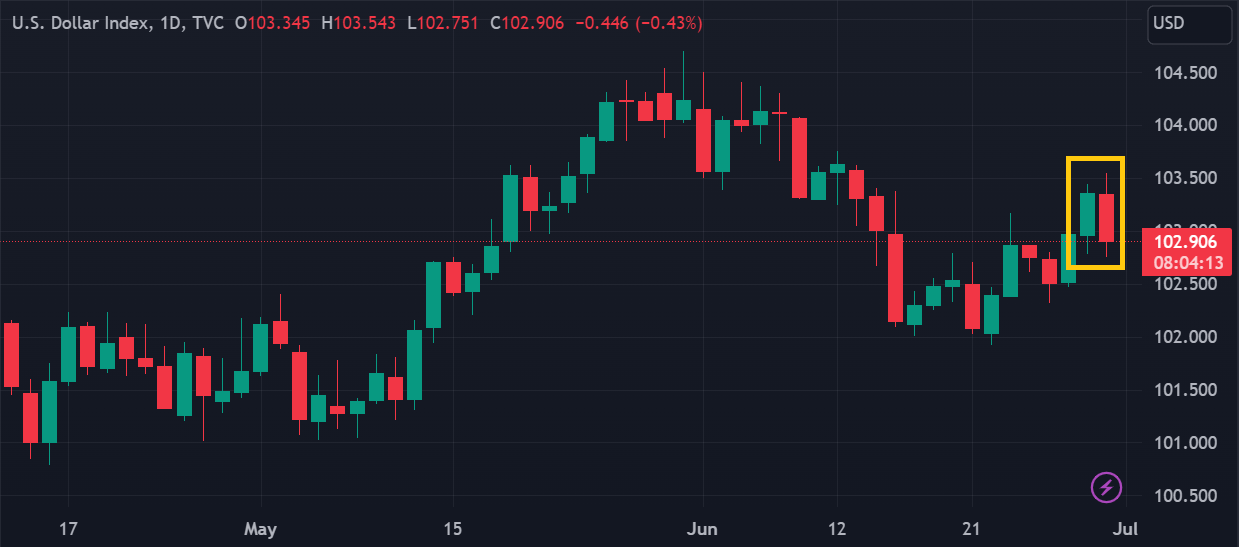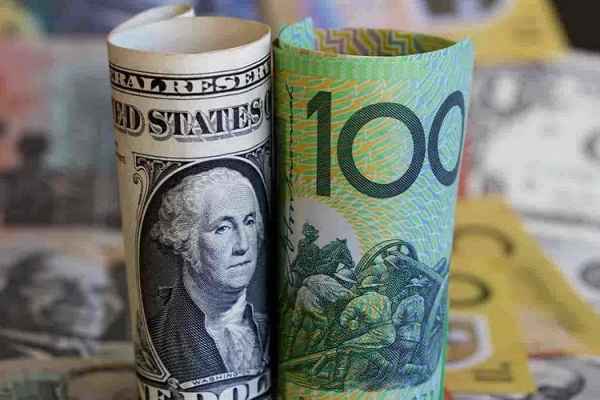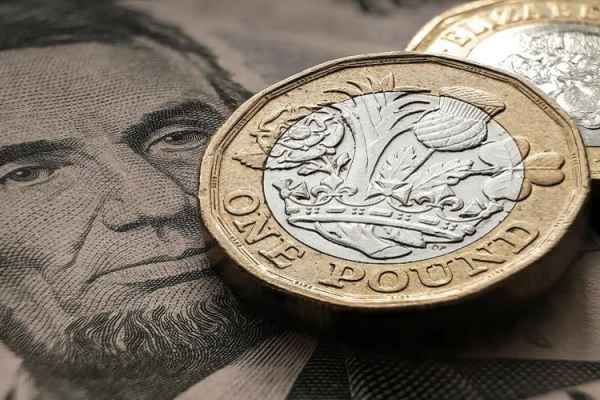The PCE data signaled another disinflation wave in the US economy, leading the US dollar to weaken in all major currency pairs.
The release of Personal Consumption Expenditure (PCE) data indicated a slowdown in inflation in the United States, leading to a weaker US dollar across major currency pairs during the New York session on Friday (30/June). The US Dollar Index (DXY) rally moderated and approached the week's opening price around 102.80s.

According to the US Commerce Department, consumer spending rose by 0.1% in May 2023, falling short of the consensus estimate of 0.2%. Additionally, consumer spending for April was revised down from 0.8% to 0.6%.
The PCE Price Index for all goods groups grew by a mere 0.1% during the same period, missing the consensus estimate of 0.5%. On an annualized basis, the PCE Price Index growth declined from 4.3% to 3.8%.
The Core PCE Price Index, the primary inflation indicator used by the Federal Reserve, grew as expected at a rate of 0.3% in May. However, its annual growth weakened from 4.7% to 4.6%.
Overall, these data indicated a return of disinflationary pressures to the US economy, dampening the renewed optimism that emerged following the speech by the Fed Chair in Portugal. In response, some traders decided to take profits, particularly on major currency pairs that had reached critical levels.
USD/JPY briefly touched the significant threshold of 145.00 today but then retraced slightly to the 144.50s at the time of writing. Similarly, GBP/USD briefly tested the 1.2600 threshold before rebounding by around 0.8% to the 1.2720 range.
Despite these developments, there are still solid expectations for a 25 basis points Fed rate hike in the upcoming month. The FedWatch tool provided by CME shows a slight decrease in the probability of a rate hike from 89.3% to 84.3%. This factor might limit the scope for further weakness in the US dollar until the next market catalyst emerges.

 Dedicated FREE FOREX VPS
Dedicated FREE FOREX VPS Free FOREX Virtual Private Server
Free FOREX Virtual Private Server MT4 Demo Contest, Get $500
MT4 Demo Contest, Get $500 Sign Up for an Account, Claim 60% Deposit Bonus
Sign Up for an Account, Claim 60% Deposit Bonus Free MT4/MT5 VPS 2024
Free MT4/MT5 VPS 2024 Send E-mail and Get Free Merchandise
Send E-mail and Get Free Merchandise $1K Refer a Friend Bonus for Pepperstone Pro clients
$1K Refer a Friend Bonus for Pepperstone Pro clients Maximize Your Earnings with 100% Deposit bonus
Maximize Your Earnings with 100% Deposit bonus Trade to Win, $5,000 Monthly Demo Contest
Trade to Win, $5,000 Monthly Demo Contest Claim 30% + 15% Deposit Bonus from LiteFinance
Claim 30% + 15% Deposit Bonus from LiteFinance






